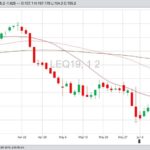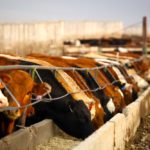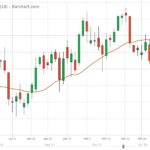Western Canadian yearling markets appeared to stabilize after coming under pressure earlier in the month. Compared to last week, yearling prices were unchanged to $4 higher on average while calf […] Read more
Tag Archives beef production

Klassen: Feeder cattle market remains volatile

Klassen: Feeder market shrugs off feed grain rally
Compared to last week, western Canadian feeder cattle prices were $2-$5 higher on average. Noted strength was in the 700-plus-lb. categories, which spilt over into the lighter calves. Quality groups […] Read more

U.S. livestock: Cattle, hog futures sag under pressure from big supplies
Chicago | Reuters — U.S. livestock futures weakened on Wednesday under pressure from large numbers of cattle and hogs and uncertainty over demand, traders said. Declines in the markets reflected […] Read more

JBS predicts profits will be stronger this year
Sao Paulo | Reuters — JBS SA executives said Friday the Brazilian meat company will deliver higher earnings in 2019 on strong demand for beef in the U.S. and Australia […] Read more

Klassen: Feeder market experiences softer demand
Compared to last week, western Canadian feeder cattle sold $4-$6 lower on average. Feedlot operators backed away from the markets due to stronger feed grain prices and weakness south of […] Read more

Klassen: Strong demand drives yearlings higher
Compared to last week, western Canadian yearling markets traded $2-$3 higher, with quality packages advancing $4-$6. Feedlot operators shrugged off the weaker live cattle futures as feed grain prices came […] Read more

Additive could be a methane game changer
A feed additive that can halve emissions while boosting feed efficiency is now undergoing a large-scale study
There’s pressure on the beef industry to be more sustainable, and some of that pressure falls on scientists like Karen Beauchemin. The Agriculture and Agri-Food Canada ruminant nutritionist and her […] Read more

Klassen: Rising feed grain prices weigh on feeder market
Western Canadian yearling prices were relatively unchanged from week-ago levels; however, feeder cattle fit for grass and calves dropped $4 to as much as $10 from seven days earlier. Rising […] Read more

McDonald’s sets greenhouse gas reduction targets
Reuters — McDonald’s Corp. on Tuesday announced what it describes as an approved, science-based target to cut greenhouse gas emissions and battle climate change, saying it is the first restaurant […] Read more

Klassen: Feeder market sends mixed signals
Compared to last week, western Canadian average yearling prices were steady to $3 lower while heavier replacements above 1,000 lbs. actively traded $3 to as much as $6 lower. Weakness […] Read more


